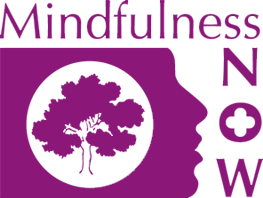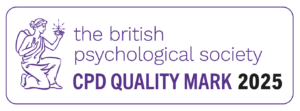All in the mind? – Opening ourselves up to a different approach
Medical research suggests that we can use our mind and our mind/body connection to be aware of painful feelings as they arise and to, in effect, stop struggling with them. When we use our mind to become aware, as in mindfulness practice, then something unusual happens. We begin to start a gentle observation of something (painful sensation) rather than being wrapped up in, and/or fighting it.
With a little practice, something very special begins to happen. We notice that the pain may start to dissolve, as if by magic! People who have experienced this for the first time are frequently amazed and begin to appreciate how doing something a little different can open the door to a new realisation that pain comes in two varieties, primary and secondary, which both stem from different origins.
Primary pain, as the name suggests arises from a physical incident of some sort which produces the pain, whether that is illness, injury, surgery or other medical treatment. It could be thought of as the body’s reaction to this incident. Secondary pain, or suffering, closely follows and is concerned with our reaction, at a conscious and subconscious level, to the primary pain.
Pain Reduction
Pain is a warning that something is wrong with the body. It is therefore irresponsible and unethical to remove pain unless we can be sure that the pain is symptomatic of a non-threatening or serious illness. In reality, how can we ever be sure of this? It is therefore preferable the help the Client to reduce, rather than remove pain and to enable the Client to have a degree of control over the intensity of pain.
Pain is a complex phenomenon and much mystery still surrounds just how it ‘works’.
The ‘gate control theory’ of pain is based upon the principle that when our nerve cells are stimulated by injury or disease – ie potentially painful stimuli – the message is transmitted to the brain. Along the way, at the spinal column and in different areas of the brain, the information is interpreted and acted upon.
Touching a hot stove results in a reflex action that causes your hand to pull back faster than the message took to reach the brain. But if you burnt your hand, then the continuing pain is ‘analysed’ in the brain – and experienced as a dull ache or a sharp twinge or whatever. In another part of the brain, the degree of discomfort is registered and appropriate action taken.
Psychological therapies including clinical hypnosis seem to have the effect of being able to separate the various ‘interpreting regions’ so that the level of discomfort can be modified, for example. Distraction, visualisation and NLP are three methods of achieving pain reduction in this way.
When working to achieve pain—relief it is sensible to allow some discomfort to remain, especially in cases of chronic suffering, where it serves to remind you of the underlying condition. The aim is to reduce the level of discomfort. Establishing a scale of pain in your imagination – varying from 10, the worst imaginable pain, to 1, pain-free – and deciding on where the Client’s level of pain lies and comparing this ‘reading’ before and after some therapy, will help you to assess the success of the practice.
The Buddha, The Arrow Sutta
This teaching is often summarized as “Pain is inevitable, but suffering is optional.” We have in life two forms of distress in life. The first arises from the unavoidable events that occur in life: the pains, insults, rejections, losses, separations, ageing, sickness and on. Such events quickly give rise to inevitable, uncomfortable physical expressions, such as feeling that the wind knocked out of us, a hollowness in the chest, a tight stomach, dizziness, tears, etc. The second form of distress lies in our thought based reactions to the event: “Why me? This is unfair. How do I change this? What will happen now?” We add more anguish to the mix by taking universal experiences personally, trying to escape the unavoidable.
These optional, second arrows of torment can -play out in different ways:
- We can blame and denounce others for shooting us with those first arrows [their rejections, insults, dismissals, wrongs of all varieties] and feel picked on by the universe.
- We can castigate and condemn ourselves for being human and not avoiding life’s inescapable disappointments, reaching the conclusion we are particularly damaged or fated to misery.
- We can chase short-term distractions and pleasures: stuffing our feelings with food, retail therapy, deluging ourselves in work, seeking refuge in television or sex, drugs and alcohol…
All of these approaches distract us until they eventually let us down. No matter how much we blame ourselves or others or keep ourselves busy, the discomforts we’ve been avoiding and abandoning resurface; from high-flying financiers to destitute heroin addicts, whatever diversionary tactics we choose will wear thin and return us to emotional conditions of vulnerability, loss, emptiness. No matter how much we’ve been sweeping under the rug, we will have to face the challenging feelings from which we’ve been hiding.
The spiritual solution is to put aside the distractions and to attend to the uncomfortable feelings directly after being hit with those first arrows. How does it feel to be fired? dumped? rejected? abandoned? Not good, but if we hold the sensations in our awareness, it turns out they’re not as overwhelming as we thought; with compassion and care the body softens, the mind becomes less agitated, the impressions arise and pass. It turns out we can survive being hit by an arrow, so long as we don’t shoot too many into ourselves in return.
How to learn more
Please follow this link to a one-day CPD training which The UK College – Mindfulness Now is presenting on Saturday 8th July 2017





